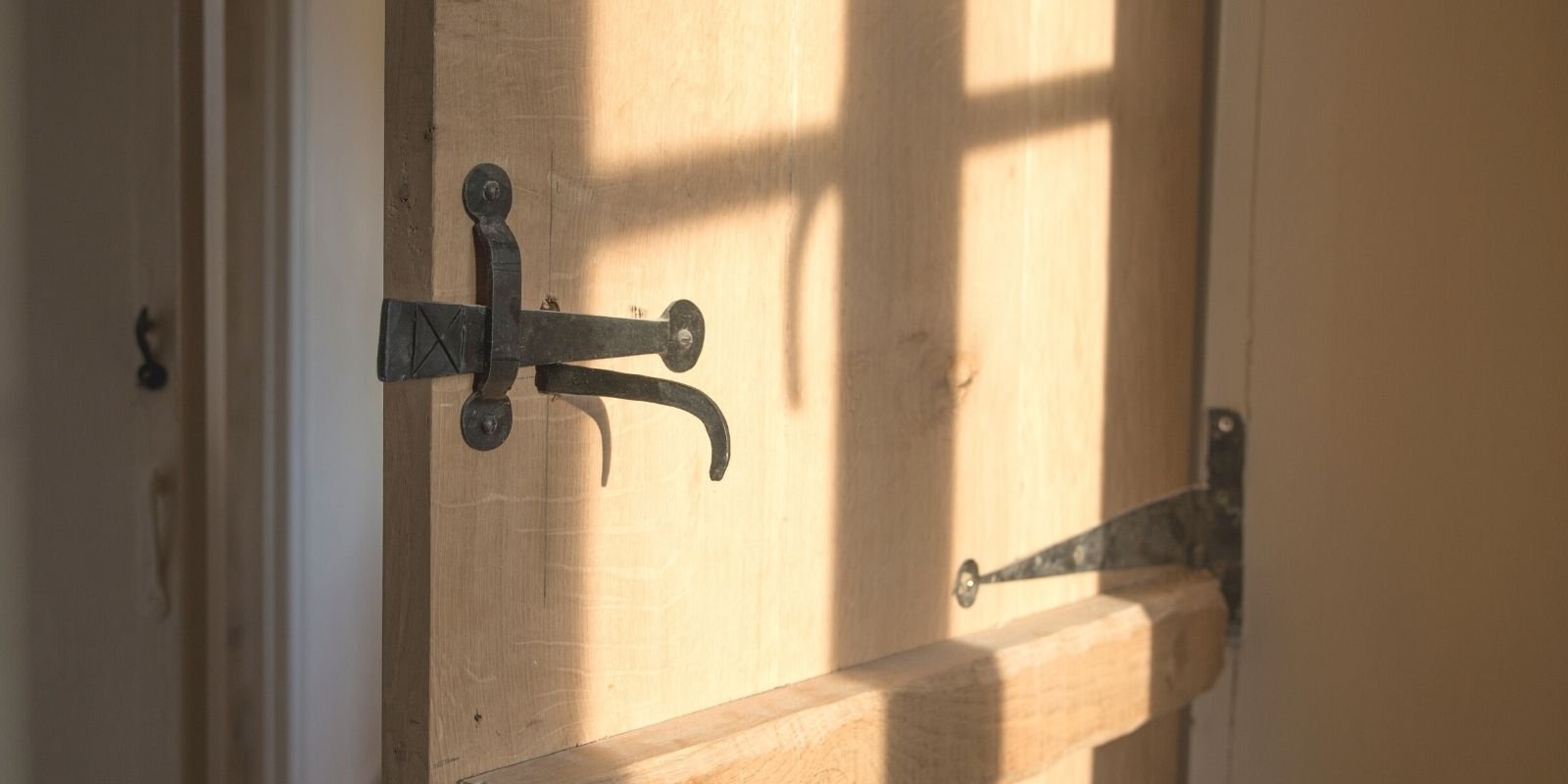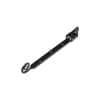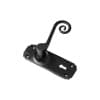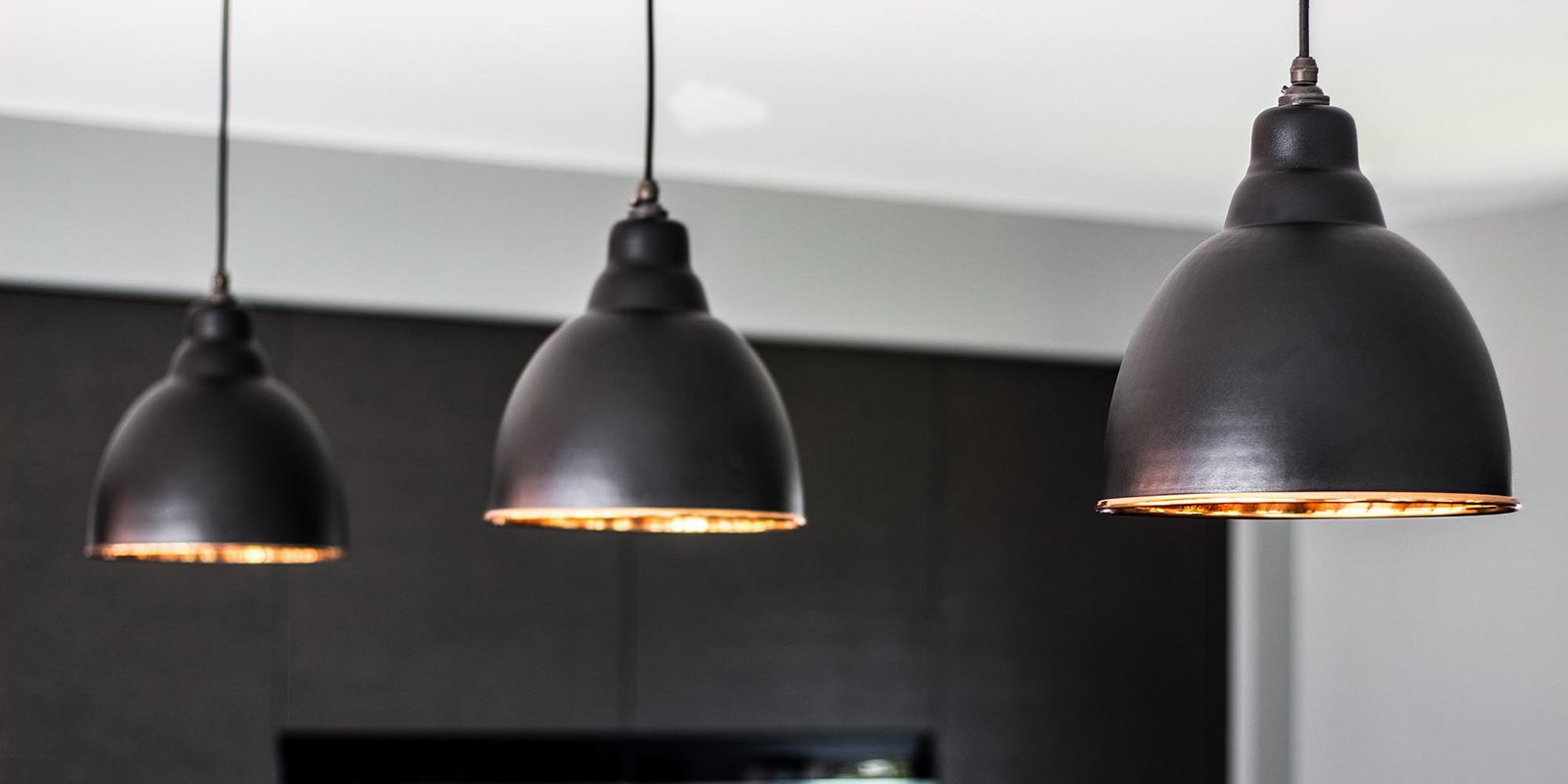What is a Rim Door Knob
Door knobs. We use them every day, probably without giving them much thought. But did you know there are subtle differences between the types of door knobs? Today, we're diving into the difference between the common door knob and the rim door knob. The distinctions are quite straightforward and it is all about the shoulder and the rose plate found at the bottom of the door knob.
The Shoulder and the Rose Plate
On many standard door knobs, there’s a noticeable feature known as the elevated shoulder. This is a raised portion at the base of the knob. It’s subtle but serves both a functional and aesthetic purpose.
A sometimes separate or attached piece to the base of the knob is the rose plate, a circular piece that the knob sits upon. This plate comes with fitting screws and helps in attaching the knob securely to the door, adding to the overall look. Its main use is to hide the mortice bar from sight and is the standard way to fit a piece of door furniture onto a door.
The Simplicity of Rim Door Knobs
Now, let's talk about rim door knobs. The main difference here is the absence of that aforementioned shoulder. It offers a clean and straightforward design. Furthermore, when you purchase a pair of rim door knobs, one of them won’t come with the attached rose plate. This is because it's designed to attach directly to a rim lock, eliminating the need for that plate.
What is a rim door knob?
A rim door knob is a unique type of door knob designed specifically for rim locks. Unlike the typical door knob, a rim door knob is characterised by its absence of an elevated shoulder. Furthermore, one of the knobs in a rim door knob set does not come with an attached rose plate. This is because it is meant to attach directly to the rim lock, allowing for a more streamlined appearance and function.
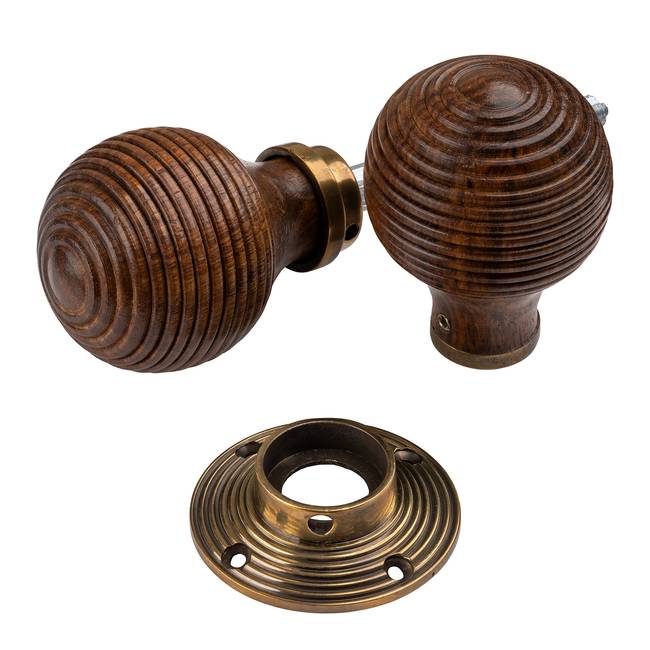
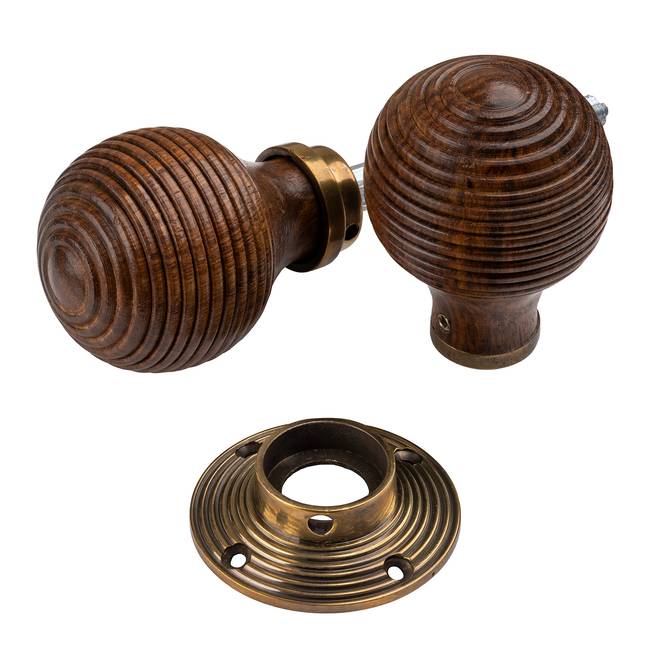
Beehive Rim Door Knobs Rosewood & Ebonised Rosewood - £28.00
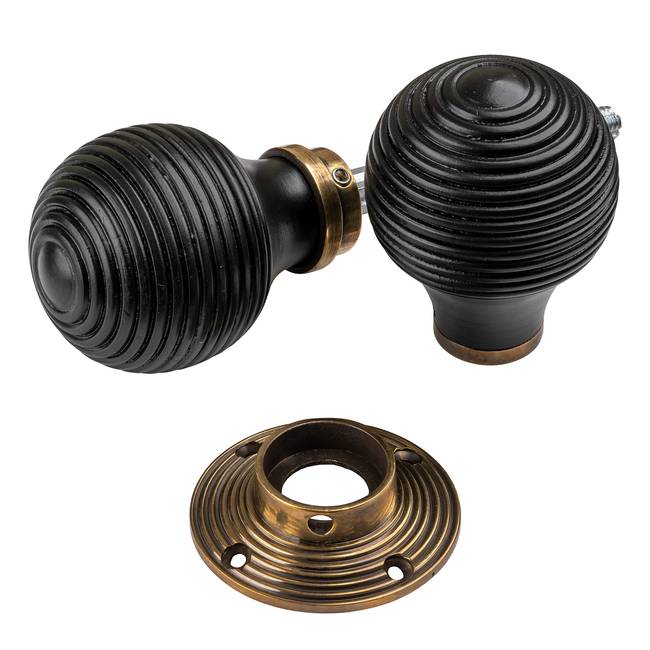

Beehive Rim Door Knobs Rosewood & Ebonised Ebonised - £28.00
Rim Door Knob Vs Mortice Door Knob
While rim door knobs are designed for rim locks, mortice door knobs are made for mortice locks. Here are the primary differences:
- Function: Rim door knobs work with surface-mounted rim locks, whereas mortice door knobs are designed for locks embedded within the door (mortice locks).
- Installation: Mortice door knobs require a deeper installation process because the mortice lock is fitted inside the door. On the other hand, rim door knobs are more straightforward, as they attach directly to the surface-mounted rim lock.
- Appearance: Mortice door knobs often have a more flush appearance with the door, given the internal nature of the mortice lock. Rim door knobs, with the external lock, can offer a more traditional or vintage aesthetic.
- Design Harmony: Beyond its functional role, the rim door knob serves as an aesthetic companion to the rim lock. It's not just about choosing a knob; it's about selecting one that complements the design and colour of the rim lock. This harmony between lock and knob not only ensures a cohesive look but also elevates the overall visual appeal of the door.

Installation and Maintenance of Rim Door Knobs
Navigating the world of rim door knobs involves understanding not just their aesthetic appeal, but also their installation and upkeep.
Maintenance: One of the standout features of rim door knobs is their longevity. Once correctly installed, they require minimal to no maintenance, ensuring smooth operation for years. Like all mechanical devices with moving parts, there might come a time when wear and tear take their toll. However, rest assured that such a moment is typically years down the line, offering you extended periods of hassle-free use.
Installation Differences: Rim door knobs present a distinct installation process compared to traditional door knobs. Here's what sets them apart:
Rose Plates: While conventional door knobs often come with two rose plates, which can be either fixed or separate, rim door knobs feature a single rose plate. This plate is situated on the side opposite the rim lock. On the rim lock's side, the knob's neck sits directly against the lock's face, eliminating the need for a second rose plate.
Return Springs: Some traditional door knobs incorporate one or both rose plates with return springs. This feature isn't typical for rim door knobs.
Mortice Bar: A unique characteristic of rim door knobs is the permanently fixed mortice bar in one of the knobs. This design choice stems from the fact that rim door knobs can only be affixed from one side. This permanent attachment ensures the knob remains securely in place, preventing any accidental detachments from the mechanism.
Considerations When Choosing a Rim Door Knob
1. Door Thickness: Ensure the rim knob is suitable for the thickness of your door. Some rim knobs might be designed for thinner doors, typical of older homes, while others might be more adaptable to modern door thicknesses.
2. Matching Locks: It's essential to choose a rim knob that complements your rim lock, both in terms of functionality and aesthetics. The two should work seamlessly together.
3. Material Durability: Consider the material of the rim knob. Materials like solid brass or iron tend to be more durable, while porcelain or glass might require more careful handling.
4. Ergonomics: Think about who will be using the door. A knob with a more textured grip might be preferable in homes with elderly residents or children, as it can be easier to turn, especially with wet hands.
5. Aesthetic Appeal: The design, colour, and finish of the rim knob should align with the overall decor of the room and the door's style. Consider whether you want a vintage, rustic, modern, or classic look.
6. Installation Process: Some rim knobs might be easier to install than others. If you're planning a DIY installation, check if the knob comes with clear instructions and all necessary hardware.
7. Maintenance: While most rim knobs require minimal maintenance, it's worth considering how easy they are to clean and whether they need any specific care, especially if they have intricate designs or are made of more delicate materials.
8. Budget: Rim knobs come in a range of prices, from budget-friendly options to more luxurious designs. Determine your budget beforehand and try to find a balance between cost and quality.
9. Safety and Security: Ensure that the rim knob, when paired with its corresponding rim lock, offers the level of security you're comfortable with, especially for exterior doors.
10. Environmental Factors: If the rim knob is for an external door, consider factors like weather resistance. Materials that can withstand varying temperatures and moisture levels are preferable. Please note that rim locks are not recommended as the primary locking system, this is because the lock mechanism is 3 lever at best, this will not comply with insurers requirements.
Comments








Explore the charm, functionality, and security aspects of rim locks. We discuss their unique benefits, the possibility...
Read Article
